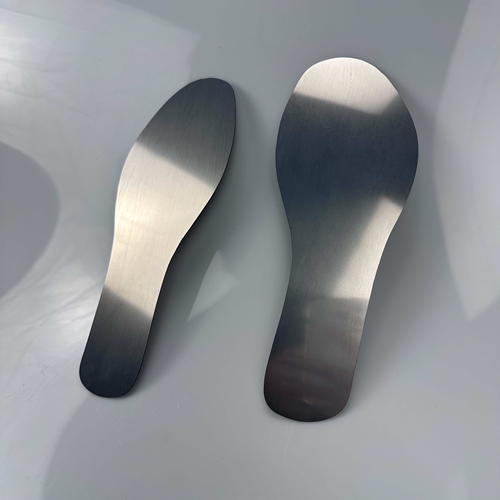- Phone:+86-17331948172 +86-0319-8862898
- E-mail: inquiry@puxingclamp.com
Dec . 10, 2024 12:42 Back to list
high quality brake hose clamps
High-Quality Brake Hose Clamps Essential Components for Optimal Performance
When it comes to the integrity and safety of a vehicle's braking system, every component plays a critical role. Among these components, brake hose clamps hold significant importance. These seemingly unremarkable parts are pivotal in securing brake hoses, which are essential for transporting brake fluid from the master cylinder to the brake calipers. Ensuring that these clamps are of high quality is vital for the overall performance and safety of the vehicle.
The Importance of Brake Hose Clamps
Brake hose clamps serve several crucial functions. First and foremost, their primary role is to keep the brake hoses securely connected to the various components of the braking system. A secure connection helps prevent leaks, which can compromise the entire braking system and lead to dangerous situations on the road. Additionally, high-quality clamps can withstand the pressures generated during heavy braking, preventing the hoses from bursting or becoming dislodged.
In performance vehicles, where braking systems are subjected to extreme conditions, the quality of hose clamps becomes even more critical. Poorly made clamps can lead to hose failure, resulting in brake fluid leaks and a catastrophic loss of braking power. For this reason, vehicle manufacturers and performance enthusiasts alike must prioritize the use of high-quality brake hose clamps.
Features of High-Quality Brake Hose Clamps
Not all brake hose clamps are created equal. High-quality clamps are typically made from durable materials such as stainless steel or high-grade plastic, offering resistance to corrosion and wear. Stainless steel clamps, in particular, are preferred in automotive applications due to their strength and resistance to rust, ensuring longevity and reliability under intense conditions.
Another important feature of high-quality hose clamps is their design. Effective clamps should provide even pressure around the hose, preventing any pinching or damage while ensuring a leak-proof seal. Many premium clamps also feature an ergonomic design that makes installation and adjustment easier, saving time and reducing the risk of improper installation.
Furthermore, some high-quality brake hose clamps come with additional features, such as a locking mechanism or a cushioned grip, which further enhances their performance and usability
. These innovative designs can help prevent loosening over time, ensuring that the clamps maintain their grip under various operational stresses.high quality brake hose clamps

Types of Brake Hose Clamps
There are several different types of brake hose clamps available on the market, each suited for different applications. The most common types include
1. Screw or Bolt Clamps These provide a simple way to secure the hose by tightening a screw or bolt. They are effective but require regular checks to ensure they remain tight.
2. Spring Clamps These are designed to apply constant pressure on the hose, adapting to any changes in size due to thermal expansion or contraction. They are often used in high-performance applications due to their reliability.
3. Wire Clamps Made of wire and shaped to hold hoses in place, these are usually designed for specific applications and provide a lightweight yet effective solution.
4. Rubber or Cushioned Clamps Providing an added layer of protection, these clamps are made with rubber for shock absorption, making them ideal for applications with vibrations or movement.
Conclusion
Investing in high-quality brake hose clamps is essential for ensuring the safety and performance of any vehicle. By selecting clamps made from durable materials, with effective designs tailored to the demands of automotive applications, vehicle owners can significantly mitigate the risk of brake failures. Whether for a standard vehicle or a high-performance machine, the right brake hose clamps will ensure that the braking system operates effectively, providing peace of mind on every journey. As always, regular maintenance checks and timely replacements of worn or damaged components remain crucial in safeguarding vehicle safety and performance.
-
Large Stainless Steel Adjustable Hose Clamp-Hebei Pux Alloy Technology Co., Ltd|Corrosion Resistance,High Breaking Torque
NewsAug.07,2025
-
Large Stainless Steel Adjustable American Type Hose Clamp - Hebei Pux Alloy Technology Co., Ltd
NewsAug.07,2025
-
Large Stainless Steel Adjustable American Type Hose Clamp - Hebei Pux Alloy Technology Co., Ltd|Corrosion Resistance&Adjustable Design
NewsAug.07,2025
-
High Quality Mini Clips Hose Clamps - German Style SS
NewsAug.07,2025
-
Large Stainless Steel Adjustable Hose Clamp - Hebei Pux Alloy Technology Co., Ltd
NewsAug.06,2025
-
Large Stainless Steel Adjustable American Type Hose Clamp-Hebei Pux Alloy Technology Co., Ltd|Corrosion Resistance&Durability
NewsAug.06,2025




